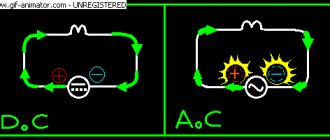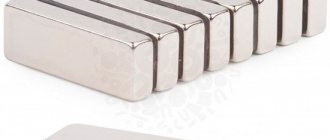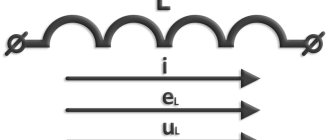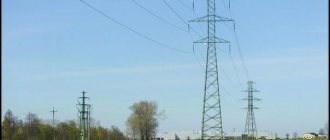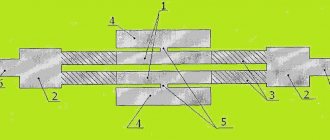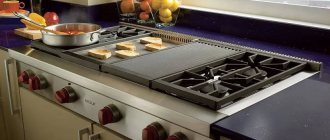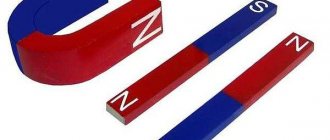Famous American self-taught inventor Thomas Alva Edison was born in Milan, Ohio on February 11, 1847 and died at the age of 84 in West Orange, New Jersey on October 18, 1931. . This tireless researcher, talented organizer and entrepreneur earned 40 thousand dollars at the age of 22, and by the age of 40 he had gained worldwide fame.
Childhood and education
An early bout with scarlet fever and ear infections left Edison with hearing problems in both ears as a child and nearly deaf as an adult. Edison would later reveal, with variations in the story, that he lost his hearing due to a train incident that left his ears damaged. But others tend to dismiss this as the sole cause of his hearing loss.
In 1854, Edison's family moved to Port Huron, Michigan, where he attended public school for 12 weeks. A hyperactive child prone to distraction, his teacher considered him “difficult.”
His mother quickly pulled him out of school and taught him at home. At age 11, he showed a voracious appetite for knowledge, reading books on a wide range of subjects. In this wide-open curriculum, Edison developed a process of self-education and self-directed learning that would serve him throughout his life.
At the age of 12, Edison convinced his parents to let him sell newspapers to passengers along the Grand. Highway Railway line. Using his access to news bulletins teletyped into the station office every day, Thomas began publishing his own little newspaper called the Grand Trunk Messenger. The contemporary articles were a hit among passengers. It was the first of what would become a long line of entrepreneurial endeavors where he saw a need and took advantage of the opportunity.
Edison also used his access to the railroad to conduct chemical experiments in a small laboratory he established. in the baggage car of the train. During one of his experiments, a chemical fire started and the car caught fire. The attendant burst in and hit Thomas in the head, likely worsening his hearing loss. He was kicked off the train and forced to sell his newspapers at various stations along the route.
concrete house
Deciding that improving the lives of the average American with electric lamps, films and phonographs was not enough, the “Wizard of Menlo Park” at the very beginning of the 20th century decided to house working families in strong, fireproof houses that could be inexpensively produced in large quantities.
What were these houses supposed to be made of? Of course, made of concrete! The Edison Portland Cement Company produced this material in large quantities. However, Edison, citing his working-class upbringing, said that if the venture had succeeded, he would not have made a profit. Edison's plan was to pour concrete into house-sized wooden molds, let it cure, remove the frames, and that was it. A concrete house with decorative castings, plumbing pipes and even bathtubs would sell for $1,200, a third of the going price for a house at the time.
But while Edison Portland Cement was everywhere during the building boom of the early 1900s, concrete homes never caught on. The forms and equipment for their creation required huge financial investments, which not all builders could afford. The incentive was also weak: few families wanted to move into houses that were marketed as being designed to get people out of the slums. Another factor was that the houses were simply ugly. By 1917, Edison's company had built only 11 concrete houses in New Jersey, but they were not well received, so no more were built.
Do you know what kind of interior Edison wanted to include in such houses?
Edison, telegraph operator
While Edison was working on the railroad, an almost tragic event turned out to be fortunate for the young man. After Edison saved a three-year-old child from a train crossing, the child's grateful father rewarded him by teaching him how to operate a telegraph. By the age of 15, he had already learned enough to work as a telegraph operator.
For the next five years, Edison traveled throughout the Midwest as a traveling telegraph operator, picking up those who had gone off to fight in the Civil War. In his spare time, he read widely, studied and experimented with telegraph technology, and became familiar with electrical engineering.
In 1866, at the age of 19, Edison moved to Louisville, Kentucky, working for the Associated Press. The night shift allowed him to spend most of his time reading and experimenting. He developed an open-ended style of thinking and inquiry, proving things to himself through objective research and experimentation.
Edison initially succeeded in his telegraph work because early Morse code was written on a piece of paper, so Edison's partial deafness was not a handicap. However, as technology developed, receivers were increasingly equipped with audible keys, allowing telegraph operators to “read” messages by the sound of the clicks. This put Edison at a disadvantage, with fewer job opportunities.
In 1868, Edison returned home to find that his beloved mother had become mentally ill and his father was out of work. The family was almost destitute. Edison realized that he needed to take control of his future.
At the suggestion of a friend, he ventured to Boston, taking a job with Western Union. At the time, Boston was the American center of science and culture, and Edison enjoyed it. In his spare time, he developed and patented an electronic vote recorder for quickly counting legislative votes.
However, Massachusetts legislators were not interested. As they explained, most legislators did not want votes to be counted quickly. They wanted time to change the minds of fellow legislators.
Personal life
Thomas’s personal life also turned out well - he managed to get married twice and have six children. The inventor almost walked down the aisle with his first wife, telegraph operator Mary Stillwell, two months after they met. However, the wedding had to be postponed due to the death of Edison's mother. The wedding took place in December 1871. A funny event is connected with the celebration: Thomas immediately after the festivities went to work and forgot about the wedding night.
Thomas Edison with family
In this union, a daughter and two sons were born, the eldest children - Marriott and Thomas - with the light hand of their father at home, bore the nicknames Dot and Dash, in honor of Morse code. Mary died at age 29 from a brain tumor.
Soon Edison married again, according to historians, out of great love. The chosen one was 20-year-old Mina Miller, whom the inventor taught Morse code, and even proposed marriage in this language. Edison also had two sons and a daughter from Mina - the only heiress who gave her father grandchildren.
Thomas Edison: Inventions
In 1869, when he was 22, Edison moved to New York and developed his first invention, an improved ticker called the Universal Stock Printer, which synchronized multiple stock tickers for a trade. The Gold and Stock Telegraph Company was so impressed that they paid him $40,000 for the rights. With this success, he left his telegraph job to devote his time to invention.
By the early 1870s, Thomas Edison had gained a reputation as a first-class inventor. In 1870, he established his first small laboratory and manufacturing plant in Newark, New Jersey, and employed several machinists.
As an independent entrepreneur, Edison formed numerous partnerships and developed products for the highest bidders. Often it was the Western Union Telegraph Company, the industry leader, but just as often it was one of Western Union's competitors.
In one such case, Edison developed a quadruplex telegraph for Western Union, capable of transmitting two signals in two different directions on the same wire, but railroad magnate Jay Gould wrested the invention from Western Union, paying Edison over $100,000 in cash, bonds, and stock. , and was released from several years of legal proceedings.
In 1876, Edison moved his expansion efforts to Menlo Park, New Jersey, and built an independent industrial research center including machine shops and laboratories. That same year, Western Union approached him about developing a communications device to compete with Alexander Graham Bell's telephone.
However, in December 1877, Edison developed a method for recording sound: the phonograph. Although this invention was not commercially viable for another decade, the invention brought him worldwide fame.
Electrographic voting
Edison was a 22-year-old telegraph operator when his first patent application was accepted for a machine he called an "electrographic voice reader."
He was one of several inventors developing tools for legislative bodies such as the US Congress, which contributed to the creation of a system of convenient vote counting, as fashion and the times demanded. Edison's voting machine was a voting device connected to the clerk's desk. On the table were the names of congressional representatives, enclosed in metal columns with the inscriptions “yes” and “no”. The legislator would have to make his choice, after which an electrical signal would travel through wires to the clerk's desk. After the vote was completed, the clerk would place a chemically treated piece of paper on metal panels and run a roller over them. The chemicals on the paper had to react in the column where the signal was received. “Yes” and “no” determined the election results and the vote count.
Edison's friend, another telegraph operator named Dewitt Roberts, bought the rights to this device for $100 and took it to Washington. But Congress was unwilling to pass a device that would reduce voting time—thus leaving less time for conspirators and political schemers—so Edison's young voter went to the political graveyard.
Thomas Edison's light bulb
Although Thomas Edison was not the inventor of the first light bulb, he did come up with the technology that helped bring it to the masses. Edison was called upon to perfect a commercially practical and efficient incandescent light bulb after English inventor Humphry Davy first invented the first electric arc lamp in the early 1800s.
In the decades following Davey's creation, scientists such as Warren de la Rue, Joseph Wilson Swan, Henry Woodward, and Matthew Evans worked to improve electric or vacuum light bulbs, but were unsuccessful in their attempts.
After an attempt by Woodward and Evans, obtaining a patent and improving the design, Edison received a patent for his own improved light bulb in 1879. He began producing and selling it for widespread use. In January 1880, Edison set out to create a company that would provide electricity to power and light the cities of the world.
That same year, Edison founded the Edison Illuminating Company, the first investor-owned electrical utility that later became the General Electric Corporation. In 1881 he left Menlo Park to establish facilities in several cities where electrical systems were installed. In 1882, the Pearl Street Power Plant supplied 110 volts of electricity to 59 customers in lower Manhattan.
Death
The great inventor did not live to see his 85th birthday for four months, but he carried on business until the last. Thomas Edison suffered from diabetes, a terrible disease that caused complications that were incompatible with life.
Thomas Edison's grave
He died in the fall of 1931, in a house in the town of West Orange, which he bought 45 years ago as a gift to his bride, his future wife Mina Miller. Edison's grave is located in the backyard of this house.
Later inventions and business
In 1887, Edison built an industrial research laboratory in West Orange, New Jersey, which served as the main research laboratory for the Edison lighting companies. He spent much of his time there observing developments in lighting technology and power systems. He also improved the phonograph and developed the motion picture camera and alkaline battery.
Over the next few decades, Edison found his role as an inventor, moving into one as an industrialist and business manager. The West Orange laboratory was too large and complex for any one person to fully manage, and Edison found that he was not as successful in his new role as he had been in his old one.
Edison also discovered that much of the future development and improvement of his inventions was carried out by university-trained mathematicians and scientists. He worked best in an intimate, unstructured environment with a few assistants, and he was open about his disdain for academic and corporate operations.
In the 1890s, Edison built a magnetic iron ore processing plant in northern New Jersey, which turned out to be a commercial failure. He was later able to translate the process into a better method for producing cement. On April 23, 1896, Edison became the first person to design a motion picture, which featured the world's first theatrical release at the Koster & Bial music hall in New York City.
As the automobile industry began to grow, Edison worked to create a suitable battery that could power an electric car. Although the gasoline engine eventually prevailed, in 1912 Edison developed a self-starting battery on the Model T for friend and admirer Henry Ford. This system has been widely used in the automotive industry for decades.
During World War I, the US government asked Thomas Edison to head a naval consulting board that examined inventions submitted for military use. Edison worked on several projects, including underwater detectors and methods for locating weapons. However, due to his moral indignation towards violence, he specified that he would only work on defensive weapons, Fr.
By the end, Thomas Edison was in his 80s. He and his second wife, Mina, spent part of their time in a winter retreat in Fort Myers, Florida, where his friendship with automobile magnate Henry Ford flourished and he continued to work on several projects, starting from trains to the search for a domestic source of natural rubber.
Magnetic iron ore separator
Perhaps the biggest financial failure of Edison's career was related to the magnetic iron ore separator.
The idea Edison had from 1880 to 1890 was to use magnets to separate iron ore from unusable low-grade ores. Ideally, abandoned mines could become profitable due to the re-extraction of iron - then iron ore was worth fabulous money. Edison's laboratory was refurbished to develop these same separators and put them into practice. The inventor bought the rights to 145 abandoned mines and launched a pilot project at the Ogden Mine in New Jersey. Edison invested heavily in the project, partially sharing costs with the General Electric Company. However, technical problems in the operation of the separator were never resolved, and the price of iron ore fell, forcing Edison to stop developing an iron ore separator.
Thomas Edison and Nikola Tesla
Edison became embroiled in a long-running rivalry with Nikola Tesla, a visionary academically trained engineer who had briefly worked with Edison's company. The two parted ways in 1885 and would publicly clash with the use of direct current electricity favored by Edison versus alternating current championed by Tesla. Tesla then entered into a partnership with George Westinghouse, an Edison competitor, leading to a major business feud over electricity.
Battle of two geniuses
In 1984, Edison hired Serbian engineer Nikola Tesla to repair electrical machines.
A confrontation arises between partners: the manager gravitates towards direct current, while the new employee turns out to be a supporter of alternating current.
Edison tries to prove the danger of alternating current and even takes part in the execution of a circus elephant who trampled three people (there is even a video of that tragic execution on YouTube, but I will not publish it here).
Not seeing eye to eye, Tesla quits and starts his own business.
In 1888, Thomas created the kinetoscope, a device for displaying moving images.
In 1895, with the discovery of X-rays and the ingenious hand of Edison, a fluoroscope was designed - a device for fluoroscopy. Development was later canceled when the dangers of such rays became clear.
Edison's legacy
Edison's career was a typical rags to riches success story that made him a folk hero in America. A free egoist, he could be a tyrant for his employees and ruthless for his competitors. Although he was an advertising seeker, he communicated poorly and often neglected his family.
But by the time of his death, Edison was one of the most famous and respected Americans in the world. He was at the forefront of America's first technological revolution and laid the foundation for the modern electric world.
First hired job
In 1859, young Thomas got a job as a newspaper delivery boy. During this period, he manages to earn up to $10 a day thanks to his extraordinary inventive thinking abilities. In 1862, he became the publisher of his own small newspaper for train passengers.
In August 1862, Edison saved the son of the head of one of the stations from a moving carriage. The boss offered to teach him telegraphy in gratitude. This is how he became acquainted with the telegraph. He immediately sets up his first telegraph line between his house and his friend’s house.
